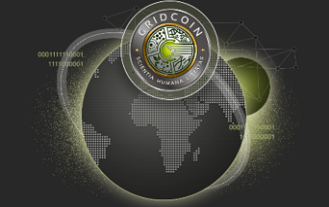
One of the greatest disadvantages that critics attribute to Bitcoin, is the fact that electricity and therefore pollution is being produced to generate a coin reward. This means that Bitcoin miners are in fact rewarded for, basically, a failure to internalize a negative externality like pollution. Moreover this increasingly energy intensive endeavor, which has decreasing returns on the pollution it produces, barely adds any other value. This is especially true if the security that blockchain provides is disregarded, since that would be the main value that expending these resources would add. To solve this problem, Rob Halford has created Gridcoin.
Gridcoin still requires energy and computing power to mine coins, but this energy and computing power is invested into existing scientific projects. In other words, Gridcoin miners would invest their computer power and the electricity they pay to activate it, to give researchers increased computing power to carry out their research. As a compensation, they get Gridcoins.
The system is not only revolutionary in the application of computing power to solve real scientific problems, but it also has two distinct features that make it more accessible to the average person. The first of these features has to do with the kind of computing needed to participate. As opposed to Bitcoin, Gridcoin is designed to run on “consumer grade hardware”. This means that your home computer will probably be able to participate in mining operations and get a Gridcoin reward for it. Bitcoin mining can only be done with specialized hardware.
The negative externality from pollution, suddenly seems more bearable, but even there Gridcoin’s creator saw room for improvement. The second Gridcoin feature that stands out has to do with energy efficiency. The protocol of the Gridcoin network provides for a 50% decrease in energy consumption when compared to Bitcoin. This means less heat and less energy is required to produce a reward, which helps to reduce the environmental impact of producing the cryptocurrency.
Apart from these two distinct features, the creator of Gridcoin has made the coin user friendly. Gridcoin also provides for ease of entry into every stage of the coin’s ecosystem. People interested in mining have a YouTube tutorial set up on Gridcoin’s official website. The system also provides clear instructions for people who want to join as investors, and for researchers who want to use the system to acquire computing power for their projects.
Gridcoin is based on BOINC, which stands for Berkley Open Infrastructure for Network Computing. This is basically the protocol that lets you volunteer your computing power for work on various projects that require it. The software is open source; Gridcoin took it into the cryptocurrency world. This created a promising system that can potentially multiply the amount of computing power available for research, manifold. So if you believe in the value of research, a lower carbon economy, you have some computer power you want to rent out to advance knowledge, and believe in the cryptocurrency revolution, try Gridcoin. Join the project that yields coins for humanity.